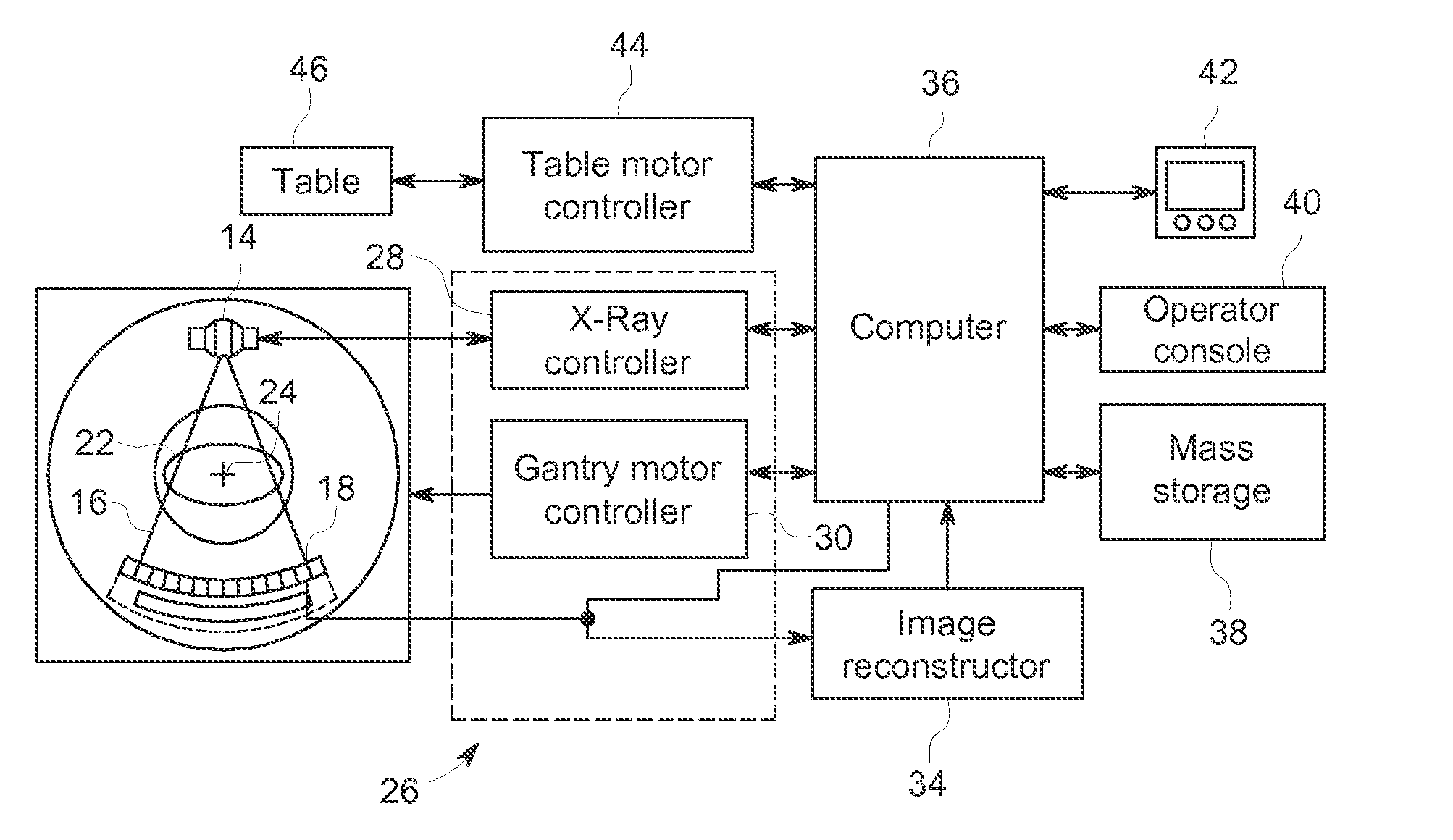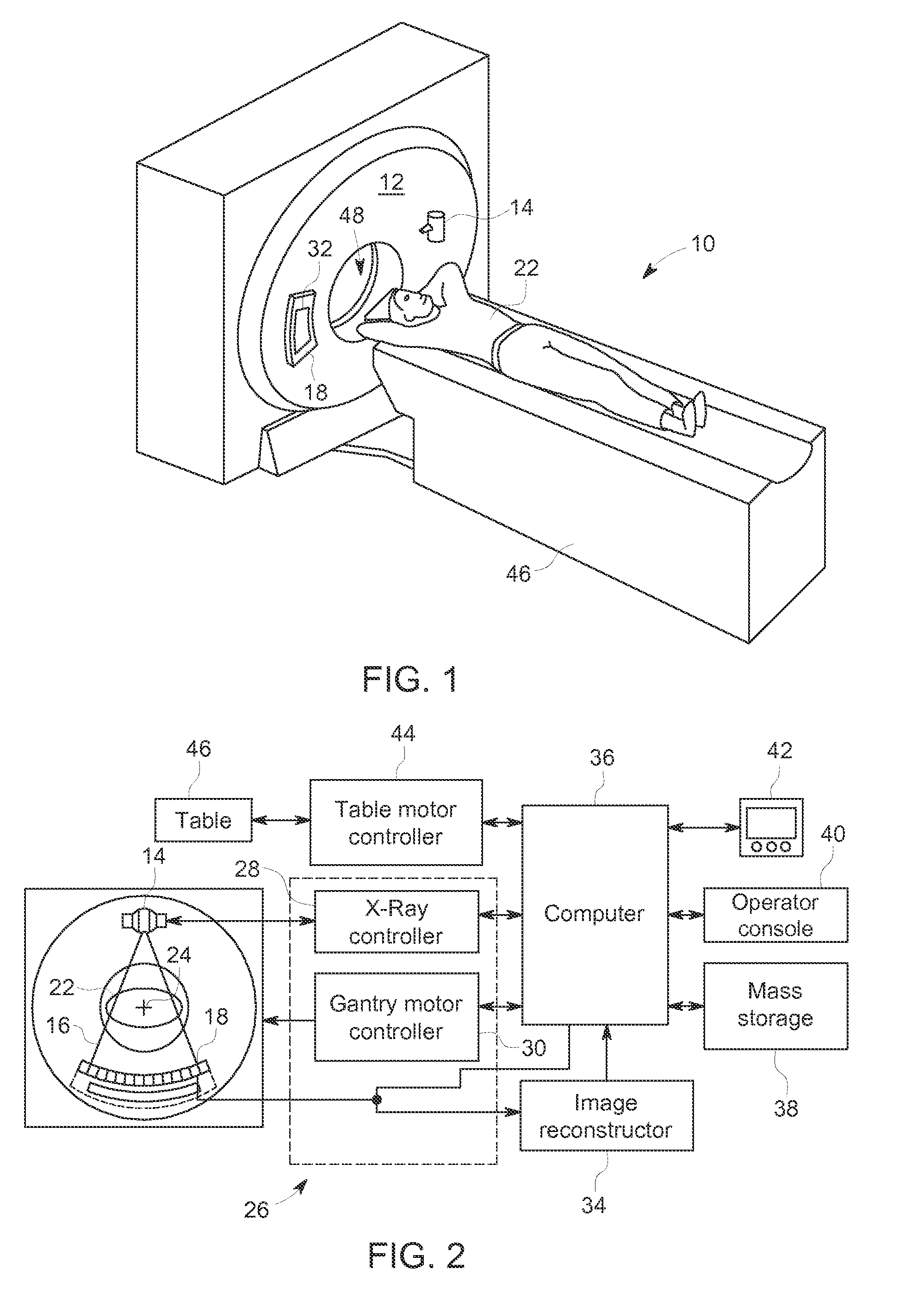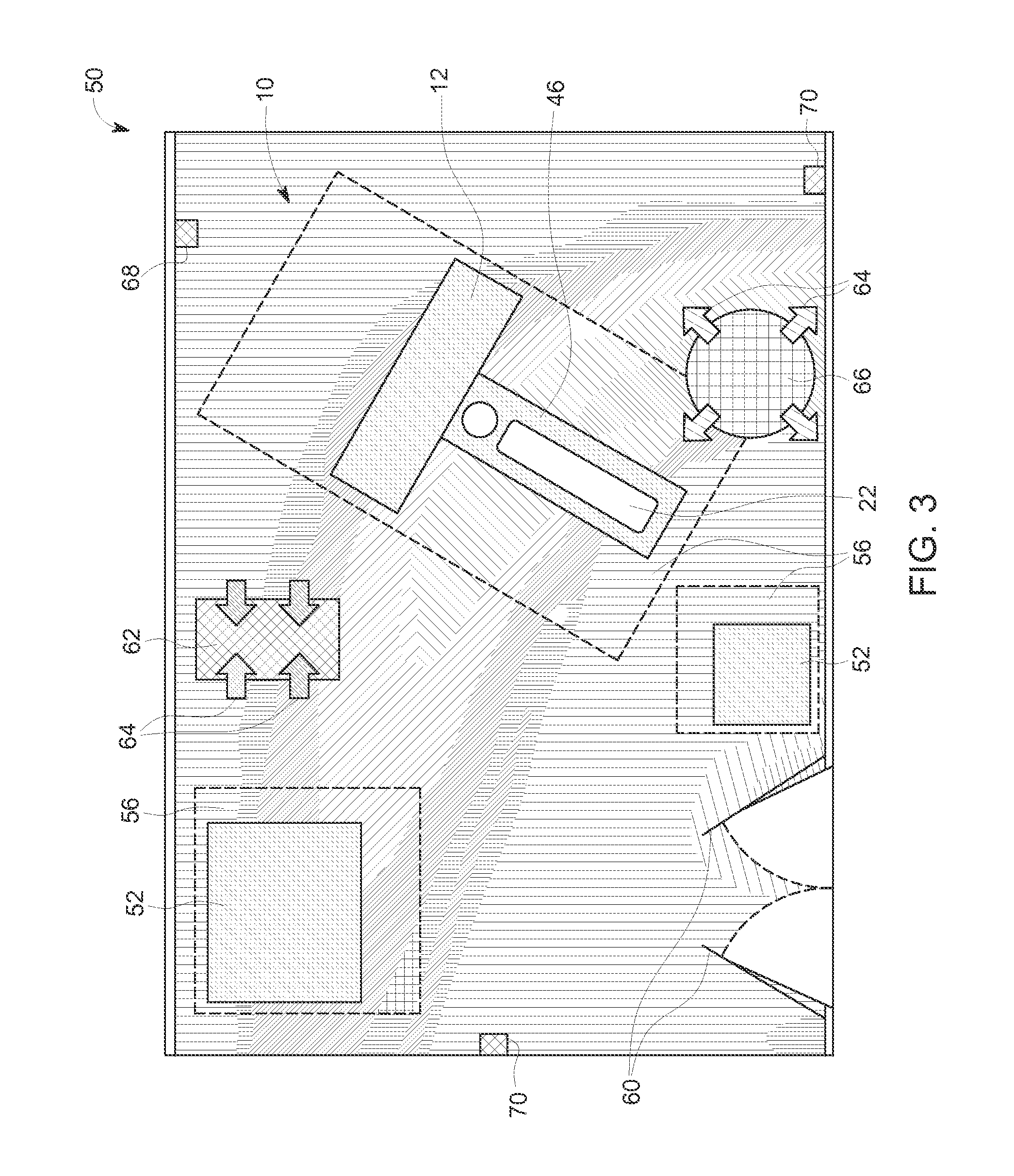Thermal optimization of an imaging scan room
a technology of thermal optimization and imaging scan room, which is applied in the direction of tomography, process and machine control, instruments, etc., can solve the problems of difficult standardization of the control of the thermal environment in such rooms to the different types of rooms, difficulty in meeting requirements, and inconvenient use of the dedicated room. achieve the effect of projecting patient comfor
- Summary
- Abstract
- Description
- Claims
- Application Information
AI Technical Summary
Benefits of technology
Problems solved by technology
Method used
Image
Examples
Embodiment Construction
[0019]The present disclosure relates approaches for modeling environmental conditions within an environment in which an imaging system is deployed. In this approach, different sizes and layouts of rooms may be modeled as well as different types of imaging system and environmental and ventilation schemes. A user may model different position and orientation of the imaging system within the room as well as different placement and usage of ventilation and temperature control within the room. Based on the modeling, the user may generate a suitable temperature control scheme and implement such a scheme so as to adequately cool the imaging system within the room while providing a comfortable patient environment. For example, in certain implementations a detailed three-dimensional representation of the thermal and system performance consequences of a proposed system and room layout may be generated for evaluation by a user.
[0020]As will be appreciated, the present approach may be suitable f...
PUM
 Login to View More
Login to View More Abstract
Description
Claims
Application Information
 Login to View More
Login to View More - R&D
- Intellectual Property
- Life Sciences
- Materials
- Tech Scout
- Unparalleled Data Quality
- Higher Quality Content
- 60% Fewer Hallucinations
Browse by: Latest US Patents, China's latest patents, Technical Efficacy Thesaurus, Application Domain, Technology Topic, Popular Technical Reports.
© 2025 PatSnap. All rights reserved.Legal|Privacy policy|Modern Slavery Act Transparency Statement|Sitemap|About US| Contact US: help@patsnap.com



